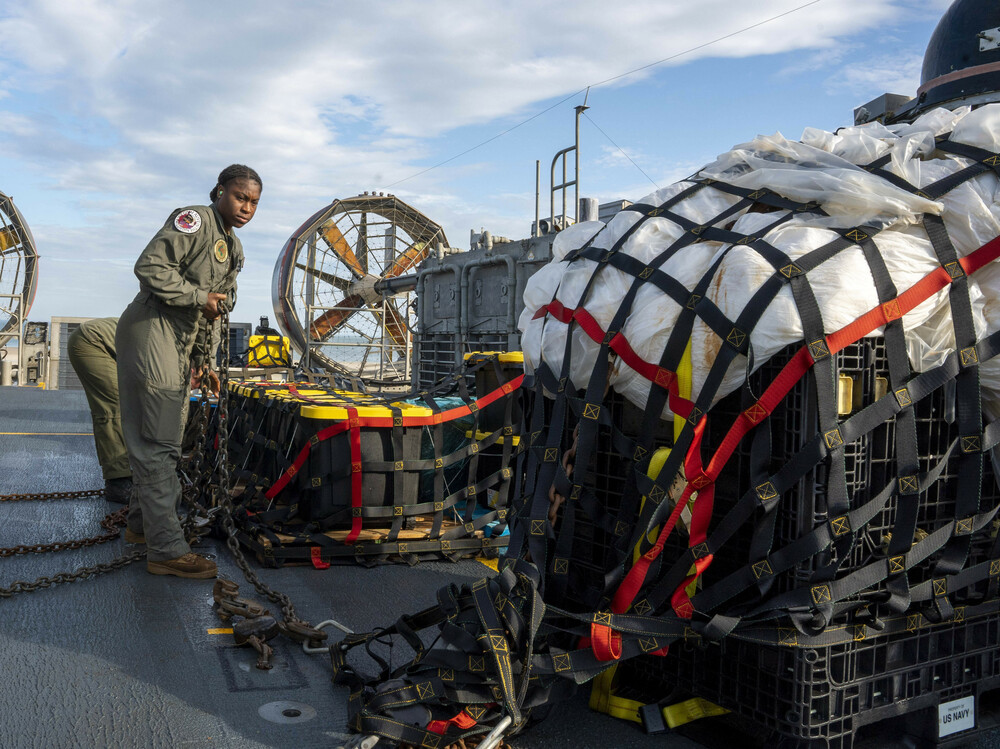
Crews using salvage equipment successfully have retrieved important elements of the Chinese balloon that was shot down off the South Carolina coast 10 days ago, the U.S. military says.
"Crews have been able to recover significant debris from the site, including all of the priority sensor and electronics pieces identified as well as large sections of the structure," U.S. Northern Command said.
The recovery operation has included the use of a crane to bring up large pieces of the airship, which was kept aloft by a balloon estimated to be up to 200 feet tall.
The payload's size has been categorized by Gen. Glen VanHerck, commander of North American Aerospace Defense Command or NORAD, as "a jet airliner type of size, maybe a regional jet," weighing more than 2,000 pounds.
The U.S. says it was a spy balloon
U.S. intelligence and military officials say the balloon is a surveillance tool, deployed by China to collect signals intelligence and other information about U.S. military operations and capabilities.
China has denied that claim, saying the massive balloon was a "civilian airship used for research, mainly meteorological purposes," that was blown off-course by strong winds.
The U.S. has dismissed that explanation emphatically — most notably by blowing the balloon out of the sky on Feb. 4, after it had soared over much of the continental U.S.
Even before that shootdown, analysts urged the Biden administration not to allow the craft to return to China — both to limit the data it might convey, and to allow the U.S. to gain its own insights by recovering the equipment.
The FBI is assisting the Defense Department in the operation at sea; it's also taking custody of material once it's brought onshore.
News of the intrusive Chinese balloon touched off alerts in the U.S. and beyond. When the Pentagon said last week that a similar high-altitude balloon had been identified over Latin America, China responded by saying it was another research balloon that was badly off-course, deeming it "an unexpected, isolated incident caused by force majeure," meaning events beyond the country's control.
3 other airborne objects recently were shot down
The balloon's prolonged incursion into U.S. airspace prompted the Pentagon to adjust how it is using radar to look for similar activities, resulting in the U.S. detecting — and shooting down — three unidentified objects over the past weekend over Alaska, Canada's Yukon territory, and Lake Huron.
All of those objects have been described as smaller than the reputed spy balloon that triggered the initial uproar in early February. Speaking to reporters on Monday, Defense Secretary Lloyd Austin said that while recovery operations for those objects were ongoing, but no debris had been recovered yet.
The U.S. "can't definitively say" what the objects were until it has a chance to analyze the debris, the National Security Council spokesman John Kirby said on Tuesday. But, he added, there is no sign yet that the objects might have been spy balloons operated by China or another foreign nation.
So far, the leading explanation for the objects is that "these could just be balloons tied to some commercial or benign purpose," Kirby said.
As for how the U.S. will handle cases of unidentified aerial objects objects in the future, Kirby said on Tuesday that the National Security Council likely will present new guidance by the end of the week.
The Chinese balloon is inflating diplomatic and political tiffs
The balloon incident quickly became an imposing challenge to smoothing out snarled U.S.-Chinese relations. The news prompted Secretary of State Antony Blinken to call off a high-profile trip to Beijing just hours before he was set to depart.
China countered U.S. accusations with its own claims, alleging that the U.S. "flew spy balloons into Chinese airspace more than 10 times since January 2022 without Beijing's permission," as NPR's Emily Feng reported.
But Blinken issued a flat denial of that claim, telling NPR's Morning Edition, "We do not send spy balloons over China, period."
Lawmakers have expressed outrage at China over the balloon — and also at the Biden administration for not shooting it down sooner. U.S. officials have said that the balloon's limited abilities and the lack of an immediate threat, especially compared to the potential for danger to people or objects on the ground, factored into the decision to wait to take down the balloon.
Questions about the balloon and other objects that were recently shot down — and the U.S. approach to the airborne objects — prompted a classified intelligence briefing for the entire Senate Tuesday morning. That session will be followed by a closed hearing by the Senate Intelligence Committee, scheduled for 2:30 p.m. ET.







